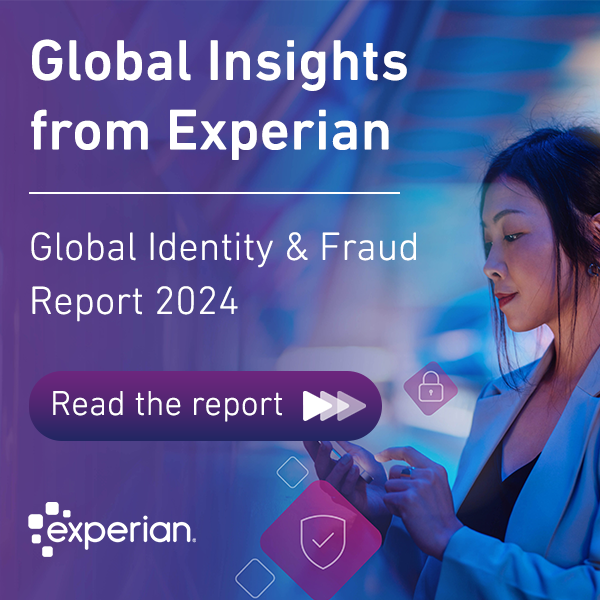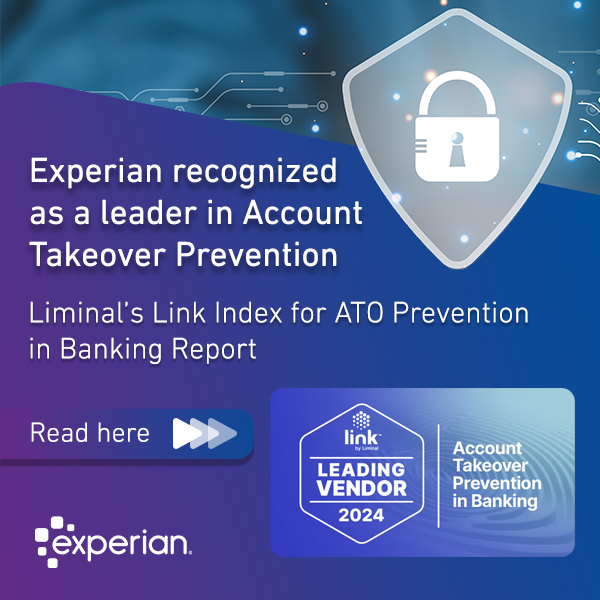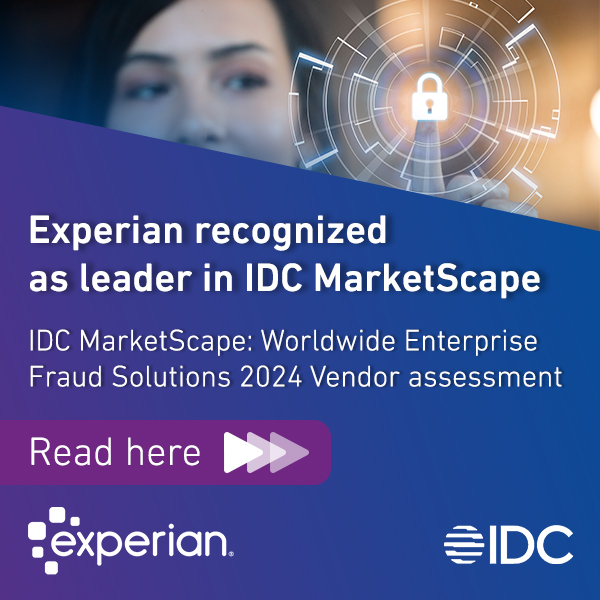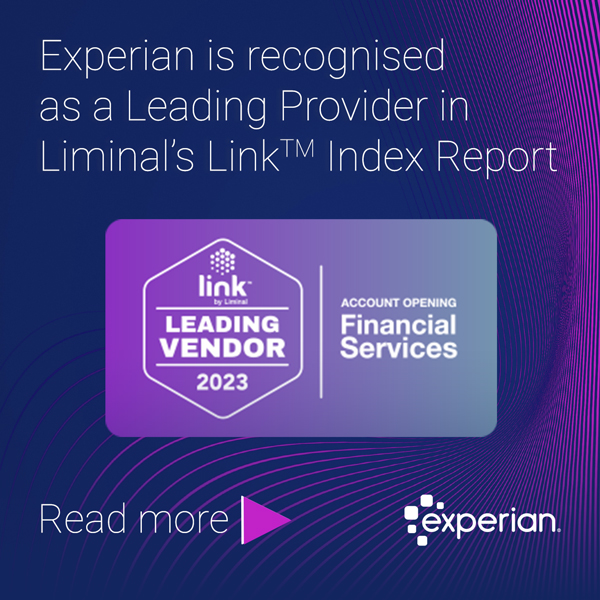Strategy & Operations
We look at the key business and operations challenges that keep business leaders moving forward.

In a world drastically and constantly changing, industries and technologies are being transformed at a rate never before experienced. Recently, I had the opportunity to speak with Roy Schulte, Distinguished VP Analyst at Gartner, about trends in the evolving world of big data, advanced analytics, and decision intelligence — trends that are powered by advancements in cloud technology, machine learning, and real-time streaming. Below, I will share a summary of key highlights. The growth of decision management More businesses are implementing decision management. They want to make more automated decisions to accelerate outcomes while improving applicability. In tandem, decisions are becoming more complicated with regulators increasingly expecting decisions to be explainable and with audit trails built-in. Equally, the combination of machine learning and decision management has placed greater focus on the importance of avoiding bias. Bringing all of this together promises continuous decision improvement; updating models and strategies in days or even hours rather than weeks and months. Essential in responding to the rapidly changing environments, none more so than the impact of Covid-19. As businesses are implementing decision management, they are putting the new systems into the cloud. Based on a Gartner survey in mid-2020, 67% of respondents said their digital business platform will be cloud-native application architecture. It’s the primary criteria for the architecture of many of these new systems. Migrating to the cloud The reason decision management is going to the cloud is the same reason other areas of business are taking this step. Organizations are highly motivated not to run their own systems. There is no competitive advantage to doing so. They want to entrust it to others so they can focus on what the business does best. The migration will continue gradually to the cloud, with a current acceleration based on Covid-19. In a recent Gartner survey, 65% of respondents said the pandemic accelerated their plans and funding for doing digital business. Most models and strategies will be built in the cloud, and the actual runtime decisions will be distributed with some on the cloud, some on-premise in a data center, and some out in the edge in a mobile device. Real-time streaming In the past, traditional business information was done on static, snaps of data from the past. Today, much of this is going real-time, depending on the kind of decision that is being made. For example, when a customer is visiting a website, there are mere seconds to generate the next best offer. This is a real-time decision. However, some decisions do not require real-time, such as the strategic decision to acquire another company or not. That is why it’s important to align the decision speed and cadence with the actual business problem. If real-time data will be used, such as for an e-commerce situation, some of it must be streaming data. With the increase in factors taken into account when making decisions, you need data that is connected, contextual and continuous. The data must come for your entire ecosystem, not a single department, but across your company, business partners, your customers, or market data. Streaming examples for e-commerce might include location, what the person has been doing on the web recently (clickstreams), and records of contact with your business such as calls and emails. A real-time lookup is involved with inventory and external factors like credit rating through an API, and customer data will include historical and real-time. With these factors, real-time decisions for e-commerce will be more effective, with higher yield rates and lower fraud rates. Machine learning in model building and execution Machine learning (ML) is making predictions, not decisions. When a prediction is made and a score is provided, a rule must be applied to determine outcomes based on the score. If considering rules or analytics, the truth is that in most cases, both are needed. The goal of ML in decision management is to have applications that are easier to develop, faster to develop, and lead to more accurate outcomes. To achieve this objective, a process covering all stages of a decision cycle is needed — Observe: Getting connected, contextual, continuous intelligence. Governance is key at this step to know where data is coming from and that it will be used in authorized ways. ML models and strategies must avoid bias and alternative data sources and lending criteria should be considered to expand the business without incurring increased risk. Orient: The next step is putting the data in context. When dealing with models at scale, it’s important to be able to track outcomes through tools such as performance dashboards. Eventually, this will lead to the hyper-personalization of models. Decide: Once models are built, strategy, rule authoring, and approvals are needed. Workflow and collaboration mechanisms help manage the process and accelerate the pace of developing new decisions. Act: Next comes the deployment of models. Using logic to make decisions across multiple applications accelerates deployment, often referred to as centralized management or reuse of decision factors. Feedback: Finally, continuous logging of decisions and effects of decisions. Tracking provides the ability to audit past decisions, explain what was done, and accurately post hoc remediate. Ongoing feedback also enables continuous decision improvement at an accelerated pace. The future of decision management includes decision intelligence In summary, there are five considerations for the future of decision management — A systematic approach to decision making, including a lot more automation and decision intelligence, is clearly on its way. Migration to the cloud is well underway with acceleration thanks to Covid-19. Equilibrium will be reached where some decisions are made at run time at other locations, but most of the development of decision-making, modeling, and strategies will be based on cloud platforms. Data science ML vendors have not focused on decisions. Some may come to realize the reason you do analytics is decisions and broaden the scope of what they do, or they may stay focused and instead partner with other vendors to enable end-to-end decision making. For certain kinds of logic, graph databases and graph analytics can be very powerful. Likely this will become a big part of decision intelligence going forward. Finally, there is huge untapped potential in optimization technology to improve decisions either at development time or even at run time by applying optimization techniques. This could lead to achieving the full vision of artificial intelligence. Related stories Insights in Action Podcast: Identifying the core capabilities your business needs to get MLOps right New Tech Talks Daily Podcast: Machine learning and AI in business — investment trends pre- and post-pandemic In digital transformation, small wins lead to big outcomes

Get the latest from our global experts with these top December headlines, including meeting the demand for digital, increasing consumer expectations, women leading artificial intelligence, and protecting against fraudsters over the holiday shopping season. Investment priorities to meet consumer demand for digital banking In this BAI Banking article, Chris Fletcher, SVP Decision Management & Cloud Services, explores the investment required of financial institutions to transform their use of data and analytics and deliver on credit risk strategies. What’s the proper path for better payments? In context to consumers’ digital expectations post-Covid-19, Progressive Grocer considers the future of payments in food retail and beyond – with contactless payment options already rolling out at a large drug store chain. Wisdom from the women leading the AI industry, with Laura Stoddart of Experian Authority Magazine speaks with Laura Stoddart, Data Scientist, about her career path, her experiences working on ethical AI and using emerging datasets to evaluate risk as well as her thoughts on the future of this industry. #TradeTalks: Increasing consumer demands and expectations Steve Wagner, Global Managing Director of Decision Analytics, joins Nasdaq’s Jill Malandrino to discuss recent research findings on increasing consumer demands and digital expectations, and ongoing considerations for a post-Covid-19 world. A holiday season like no other: What to know to guard your company against fraud Itay Levy, Forbes Councils member and CEO and Co-Founder of Identiq, provides his perspective on the increased preference for online shopping and the need to strike the right balance between customer experience and efforts to mitigate fraud. Stay in the know with our latest insights:

Check out the 10 most popular stories of 2020 that will help to kick-start your 2021. It includes a look back on how trends evolved throughout the past year, which trends will be durable in the new year, and what the global pandemic has taught us about creating meaningful relationships between consumers and businesses. Top 10 list of the best stories in 2020: 10. Model recalibration drives impactful results during constant change Banks have managed through stressed scenarios in the past but none have ever had to predict customer behavior in a pandemic. General indicators of risk or stress didn’t reveal enough about what was going on in customer portfolios. Active model calibration in our current situation had a measurable effect on approvals and expected losses but executives still needed to regain control over disrupted models. Read full article 9. Digitally managing your at-risk customers most impacted by Covid-19 Lenders felt a tremendous amount of pressure this year trying to help reduce the impact of the financial burden Covid-19 put on consumers by supporting payment forgiveness and deferment programs. This made it difficult, though, to understand changes in the credit profile of a previous solvent customer and mobilize their operations teams to service these good but at-risk customers. Read full article 8. The rising need for identity verification Consumers turned to digital when mass closures of businesses prevented in-person transactions. Even as some businesses re-opened with precautions in place, many consumers still felt it was safer to do business online emphasizing the importance of security and identity verification. But while some level of friction invokes a sense of security, too much or unnecessary friction had an adverse effect. Read full article 7. Proactively restructuring debt to help improve customer affordability At the beginning of the year, no one could accurately predict how the world would be impacted by Covid-19 or how long it would last. Customer affordability models shifted into unknown territory and businesses tried to figure out how to assess customer risk in this new context. Lenders relied on the customer data and insights available to them and needed them to work harder at anticipating changes. Read full article 6. Be mindful of these 3 strategies when engaging customers digitally The road to digital was already being paved when the pandemic started but consumers and businesses were pushed there to engage en masse this year. There were practical challenges that needed to be addressed in the short-term, like managing call volume with a remote workforce. But more importantly, it put the spotlight on massive areas in need of modernization, such as the management of liquidity and risk. Read full article 5. Banking trends and opportunities in the post-Covid-19 crisis era This year was marked by adaptation, resilience, and reflection – which can be said for our personal lives – but in the context of the banking industry, it created an opportunity to change or accelerate priorities. Moving operations to the cloud, making sure decision strategies are fit-for-purpose, and applying analytics in a more useful way are some of the stickier trends we’ll likely see continue in 2021. Read full article 4. Why consumer trust in the digital experience is so important in a pandemic era Despite the uncertainty of this past year, one thing remained certain – cultivating customer trust is critical to brand loyalty. Digital customer trust, however, required businesses to consider several specific factors that inform and build trust. Digital adoption was mistakenly considered the most important of those yet being treated fairly, customer recognition, and fraud prevention were stronger signals. Read full article 3. Game changers: Women in Artificial Intelligence Artificial intelligence offers a lot of value, especially when used to better support customers’ financial needs. As more businesses processed huge amounts of data with advanced analytics and AI this year, human oversight was key to ensure transparency and explainability. This “human element” was the inspiration for an article mini-series featuring five women who are making a real difference using AI innovation. Read full article 2. Digital transformation through cloud-first decisioning The credit and fraud risk decision management landscape changed this year – including how the customer journey is being redefined. Mounting consumer expectations for a better digital experience meant the front and back end of a business’ operations were no longer mutually exclusive. Cloud-based applications was the reset needed to move away from functional and product silos to focus on the customer. Read full article 1. Covid-19 as a gateway to fraud Fraudsters are opportunistic which exposed another ugly side of the pandemic throughout the year. As people and businesses moved to digital to engage with one another, criminals exposed weaknesses in the tools, processes, and systems used to protect those interactions. Investment in fraud prevention was already on the rise but steadily increased throughout the year as new fraud trends emerged. Read full article

The rise of digital decisioning software enables organizations to scale a similar level of personalization, offering customers what they need at the exact right time. And organizations that do it well dramatically improve the customer experience and drive loyalty and revenue in the process. But realizing this promise takes the right tools. The most effective decisioning platforms include a powerful combination of data, analytics, and technology. Equally important, the software must allow non-technical users to update and change strategies to better meet customer and organization needs without burdening IT. Good versus great From a credit risk perspective, there's a vast difference between good decisions and really great decisions. For many organizations, the current status quo still involves decisions made in silos, with business groups sitting in different locations (now even more so, given the prevalence of work-from-home). Creating usable predictive models and then putting them to use can take weeks or even months. What's more, changing the model often requires that business users make requests of perpetually overloaded IT teams. To be sure, the process eventually yields decisions. However, from the customer's POV, they may be slightly irrelevant or feel less than personal. On the business side, the model may lack essential data from across the organization or not yet include critical factors in a rapidly changing landscape. A great decision, on the other hand, benefits the customer and organization alike. Robust analytics enable the decisioning process to reflect the most relevant customer data, from websites they've recently browsed to purchases they've made. The decisions, as a result, reflect that thoughtfulness. They're immediately useful and relevant to customers, putting forth guidance and products when customers need it most. Exponential organizational value Improved customer experience is a key objective for many organizations. Digital decisioning can help further that goal while also providing returns in multiple other ways. For instance, an advanced digital decisioning platform enables organizations to pivot quickly in the face of crisis. Organizations can add new data sources and explore new models in rapid fashion, tailoring them to immediate demands. In doing so, they not only improve predictive power, but they also produce better decisions. The process allows companies to discover and launch new products, reach new markets, and surface early signs of trouble within customer segments. This past year, we witnessed first-hand how organizations leveraged digital decisioning to deftly navigate a challenging environment. For instance, one of our customers, a large bank, used the software to run simulations of new strategies it was considering in response to the pandemic. In doing so, the bank gleaned a better understanding of how the plan would impact its portfolio. The company was also able to identify areas of overlapping services and take proactive measures to eliminate duplication and reduce expenses at a critical time. The cumulative result of improved digital decisioning is an increased ability for companies to differentiate themselves from the crowd. This is true across industries and verticals, from innovating consumer financing for automotive companies to helping healthcare organizations better manage patient debt. That secret sauce Like the friend that really gets you, a great decisioning platform is invaluable. But what makes a platform rise to the top? As noted above, the ability to incorporate and integrate lots of high-quality data is essential. Timely customer data helps identify customer trends and fuels more accurate predictions of future behavior. Platforms should also take regulatory obligations, business constraints, and changing risk factors into account. Solutions that leverage advanced analytics can then transform an ever-growing body of data into decision insights. The software should capture the data used in making those thousands or millions of decisions and make it available real-time to business users, creating a continuous feedback loop. The latter ensures that businesses can stay relevant and nimble. Notably, leading digital decisioning platforms also prioritize the business user along with IT expertise. At a moment that demands quick responses and near real-time solutions to customer needs, business users also need the ability to design, build, test, and deploy strategies. The democratization of the software ensures that the organizations can experience a digital decisioning platform's full potential. In this new era, the organizations that deliver value across the customer journey will be the ones that thrive. Digital decisioning empowers organizations to manage costs and risk while keeping the focus on the customer. They can do this even as they grow, building healthier, more responsive companies with customers at the core of every decision. Related stories: Cloud-based decision management is a must for re-imagining the customer journey Impact of technology on changing business operations Digitally managing your at-risk customers most impacted by Covid-19

In this Tech Talks Daily podcast, Shri Santhanam, Executive Vice President and General Manager of Global Analytics and AI, speaks with podcaster Neil C. Hughes. Santhanam discusses trends based on data from our recent Global Insights Report, which found that nearly 70% of businesses have used either machine learning or AI in business management and almost 60% of businesses are increasing their budget for analytics and customer creditworthiness in the next 12 months. Here are highlights from this 21-minute podcast: Covid-19 disruption has become a catalyst for breaking largely mindset-based transformation barriers, leading to unprecedented digital disruption and adoption of advanced technologies Experian global research confirms a fundamental change in the way businesses and consumers think about digital adoption and experiences Businesses will continue to increase budgets to grow data science resources to align their intent with their capacity Consumers have high expectations and little patience through their digital engagements, with 1/3 of customers only willing to wait 30 secs or less before abandoning an online transaction The greatest success from analytics and AI in business is realized when teams are focused and agile in their approach Listen now: Get more insights from these podcasts featuring Shri Santhanam: New Podcast from AI in Business: The evolution of the data business in the age of AI What is the right approach to AI and analytics for your business? Four fundamental considerations Forbes Podcast: Looking to Data, Analytics and AI to plan the way forward

Over the past fifteen years, identity-related fraud has evolved towards more automation, in the form of scripted attacks and bot attacks, as well as more sophisticated phishing attacks. Credential harvesting was the most prevalent form of fraud in the early 2000s, while recently, the global coronavirus pandemic has accelerated sophisticated attacks such as account opening fraud and account takeover fraud. This infographic showcases the evolution of fraud from 2005 to 2020, offering a complete view of different types of fraud and the most effective identity management and fraud prevention solutions to keep ahead of fraudsters over time: Related stories: Fraud trends during a very pandemic holiday Getting to grips with the shifting fraud landscape What your customers say about opening new accounts online during Covid-19

Consumer demand has shaped the way businesses worldwide have adjusted or intend to adjust operations and investments throughout the pandemic. Businesses that have struggled to meet the new expectations of consumers will need to meet ever-changing conditions with careful investment and data-driven analyses. Experian’s latest Global Insights Report shows two-thirds of consumers globally have remained loyal to their favorite brands during the pandemic. Brand loyalty was found to be the highest in India, at 80%, and lowest in France, with a bit more than half, at 57%. However, loyalty may not be a given going forward. Competitive differentiation is founded on how you engage customers, at every interaction. Our research shows that loyalty is intrinsically linked to trust, security and convenience. Payment system providers, such as PayPal, have retained the top spot for customer loyalty for three years in a row, but there continues to be movement among the remaining top five industries. This fluctuation, indicative of consumer preferences and behaviors, is fueled by the varying speed at which businesses globally are transforming front- and back-end systems. Particularly, this holds true for the pace of digitization of credit risk and fraud risk operations. Leverage data to retain loyalty Consumers have higher expectations than ever before, and businesses need to meet or exceed these expectations by adapting to correlate with the dynamic nature of the customer journey throughout the continuing pandemic. The report also found that 60% of people have higher expectations of their digital experience than before Covid-19, increasing the need for businesses to make sure that they are leveraging data to benefit their customers, providing secure and convenient digital experiences. Although most customers have shifted to digital and prefer the conveniences of online, mobile and contactless transactions, concerns over data security remain. In response, businesses need to carefully navigate customer experiences to ease apprehension. A great example is the trust, and therefore loyalty, that can be established by using customer data for identity authentication. Customers gain protection while enjoying a hassle-free experience that is non-threatening and transparent. Some businesses recognize these needs, with 40% reporting they are doing a better job communicating how customer data is used to enhance the customer experience, protect consumer information and personalize products and services. Integrating data, analytics and technology Our survey also found that only 24% of businesses are deliberately making changes to their digital customer journey. However, many of them have intentions of making changes and are increasing their budgets in order to do so. Three of the top five solutions businesses are using to help improve the customer journey are designed for driving insights into faster customer decisions. Of these top five solutions, the use of AI to improve customer decisions ranks first amongst banks, payment providers, and retailers ranks first. Companies who are, or plan to, accelerate the implementation of AI can make faster, smarter data-driven decisions to better serve consumers. The key to better serving customers lies in a business’s ability to integrate data and decisioning technology to deliver fast and relevant products and services. In fact, the study found that one in three consumers are only willing to wait 30 seconds or less before abandoning an online transaction, including accessing their bank accounts. With such a short window to keep the customer engaged, faster decision making is imperative to not only retaining a customer’s loyalty on a long-term basis but getting them to commit to a transaction once. Businesses, particularly retailers and financial services who implement the necessary technologies will help move economies from sustainability mode towards a future of growth but cannot do so without continued consumer demand. While customer loyalty does remain, it is up to businesses to adapt and accommodate to retain, and potentially increase the impact of these adjustments. Regardless of where they’re transacting, consumers expect a secure, convenient experience—and they’ll quickly abandon transactions if they’re let down. So, businesses must keep their focus on transformation. Discover more insights from our longitudinal study of the impact of Covid-19 on businesses and consumers.

In this episode of Insights in Action, Mark Spiteri, SVP of Software Engineering, and Mariyan Dichev, Manager of Software Engineering, cover what it takes to build award-winning technology teams. They explore the dynamics of their work and how the ability to automate the decision-making process alongside the customer journey has become paramount in today’s dynamic environment. Mark and Mariyan walk us through their own transformational journey to enable organizations of all sizes to gain direct access to advanced tools and actionable insights. They give background on Experian Global Decision Analytics Technology Team winning AIBEST's Project of the Year 2020 Award in recognition of the strides they have made to enable quick, accurate, and effective credit decisions. Some of the topics discussed in this 20-minute podcast: Practical advice to get industry recognition for outstanding information technology processes and results. How to navigate the IT talent crisis successfully. What IT executives should look for when hiring for their teams. Tips on identifying the right fit: 3 types of people every award-winning engineering and software development team needs. How to manage and grow high-performing technology teams.

Explore these November headlines to stayin-the-know. Coverage includes forward-looking fraud prevention, International Fraud Awareness Week, and consumer and business research takeaways from our global experts. Fraud prevention strategies to prepare for the future Chris Ryan, Senior Fraud Solutions Consultant, provides tips on proactively combatting fraud risks to be positioned for success in a post-Covid-19 world — including categorizing fraud and using advanced analytics and technology to keep pace. #IFAW2020 Interview: David Britton, VP of Industry Solutions, Experian For International Fraud Awareness Week, David Britton, Vice President of Industry Solutions, speaks with Infosecurity Magazine about the current fraud landscape, common fraudster tactics, and best practices for preventing fraud. Only 30 seconds to impress — meeting APAC consumers’ online expectations Sisca Margaretta, Chief Marketing Officer for Experian Asia Pacific, explains why speed, seamlessness, and a thoughtful user experience are no longer nice-to-haves, but musts in today's environment. Pandemic entitlement: Consumers demand more online, Experian finds This MediaPost article explores business sentiment verse consumer expectations for their digital experience in the wake of Covid-19, with insights on how businesses can win from Steve Wagner, Global Managing Director of Decision Analytics. Are APAC banks equipped to help consumers in financial distress while juggling credit risk? Ben Elliot, CEO, Experian Asia Pacific, discusses the impact of Covid-19 on consumer financial wellbeing and spending power, and what the financial services and insurance industries can do to help those in financial distress while effectively managing credit risk. Stay in the know with our latest insights:

Fraud rates have held steady throughout the year despite the move to digital, but a few factors could change that this holiday season bringing greater losses than those of Christmas past. Globally, we’ve seen a spike in digital traffic as a result of Covid-19 the past 6-9 months, with some countries like Brazil reporting a 200% increase in digital traffic to retail sites. This means some physical fraud controls, like EMV or chip-and-pin, are no longer relevant. The number of data breaches this year compromised more than 36 billion records, eclipsing history’s reported record total. This means more legitimate credentials have been stolen, sold, and/or being used to commit fraud. On top of that, many businesses may be starting to loosen their online security restrictions in order to take full advantage of the topline revenue that comes with the influx of holiday traffic. This is especially true for those who’ve struggled to stay in business during Covid-19, who will look to increased holiday spending to offset declines earlier in the year. Unfortunately, fraud at the holidays is difficult to detect and there can often be a significant lag until fraud is realized, in some cases up to 3-6-months. So how do businesses protect themselves while providing a secure place for customers to shop online this year, especially during big events like Black Friday and Cyber Monday, while still offering a convenient digital experience? Businesses will need a layered approach to fraud management, and it starts by knowing what to expect. Holiday fraud trends to watch: Payment behavior: Most consumers will do all their holiday shopping online which means card-not-present payment fraud will likely spike, as fraudsters hide in the increased volume of traffic. With the shift from physical to digital transactions, traditional fraud controls, like EMV or chip-and-pin which are effective at minimizing card-present fraud, simply are not available to protect digital transactions. Average order value also tends to increase during the holiday season, requiring retailers to establish higher value thresholds for each order, to avoid flagging legitimate orders for review. Shipping behavior: Generally shipping behavior at the holidays is different than the rest of the year. People buy gifts and ship directly to the recipient, which means fraud detection logic that matches billing and shipping addresses to the legitimate cardholder may cause more false positives than fraud detection. Chargeback fraud: Holiday gift-giving pressure or loss of household income can sometimes lead to chargeback or friendly fraud, where a person may purchase an item – typically entertainment services or devices – use it and then return it, with or without intent to pay. Or in some cases, purchase an item, then issue a chargeback claiming no knowledge of the purchase. In-account fraud: Many retailers are now requiring a customer to set-up an account when making a purchase to identify their behavior and track purchase history. Like we’ve seen in the banking industry, fraudsters will use stolen login credentials to gain access to these legitimate accounts, make purchases using a card on file, and set up a secondary shipping address to re-route the items. Mule behavior: A newer form of fraud that’s gaining traction is where a legitimate customer is recruited to use either their shipping address or in some cases, their validated account to make a transaction using stolen payment information, receive the package, and forward to the fraudster’s address. Sadly, these fraudsters are known as “mule herders” are exploiting desperate, out of work people by recruiting them to work on their behalf. In the financial services space, victims may knowingly or unknowingly use their own bank accounts, to allow fraudsters to funnel money from other stolen accounts as part of an elaborate wire transfer or P2P payments fraud schemes. Phishing: The accelerated digital traffic during the holidays presents fraudsters a great opportunity to get consumers to click on all sorts of “offers” or fake merchant websites and steal personal information. This increase in phishing can take place across all known channels – email, phone, social, text, and web – and is a trend we’ve seen attack businesses and consumers alike. Unfortunately, fraudsters are appallingly impersonating health organizations, setting up fake cleaning and healthcare supply stores, Covid-19 statistic maps, and websites, all in an attempt to lure victims into divulging sensitive data. Who does fraud hurt the most? Online fraud during the holidays hurts many players in the transactional relationship – the legitimate customer, the merchant, and the bank or payment provider – but merchants tend to bear the biggest burden. This is best illustrated by the dispute process. When making a purchase, the main relationship is between the customer and the merchant. However, when a stolen credit card is used, or when a consumer has been a victim of account takeover fraud or some other fraudulent behavior, the person will dispute the charge directly with their bank or credit card company (card issuer). Card issuers and banks will either hold the charges back or reverse the financial transaction until a resolution can be met with the merchant. It then lies with the merchant to prove that the transaction was in fact legitimate, and to dispute that chargeback. The consequences of fraud for the merchant include multiple pain points: the cost of the stolen goods (and any shipping fees), the chargeback fee, potential fines by the merchant’s acquiring bank, and potential reputational challenges. Fraud prevention during the holidays The pandemic has already put an incredible amount of pressure on businesses and the rise in sophisticated fraud attacks may seem insurmountable. Creating a secure and convenient experience for your customers is possible and there are strategies and tools that can be implemented. Tools to layer into your fraud strategy: Require (and check) signatures upon postal delivery Offer immediate email confirmation and tracking number information Use a wide variety of digital and transactional data to make optimal risk/trust decisions Adopt dynamic risk strategies where controls can be adjusted to match the threat level Leverage machine learning models to access a variety of niche solutions or data sources for accuracy If 2020 taught us anything, it’s flexibility and resilience – two words that should describe your approach to fraud management this holiday season. The holidays can be a time of great joy, and this year most people are hoping the holidays will lift their spirits. Don’t let fraudsters dampen those holiday spirits! Related stories: New research available: The continued impact of Covid-19 on consumer behaviors and business strategies Better identifying your customers leads to greater trust How to get more from your existing credit risk and fraud risk technology

In this AI in Business podcast, Shri Santhanam, Executive Vice President and General Manager of Global Analytics and AI, speaks with Emerj founder, Daniel Faggella. Santhanam breaks down unique AI business opportunities and challenges. Here’s a brief summary of the 30-minute podcast: One of the top questions we get from our lending clients is: ‘How has consumer behavior changed and what does it mean for my business.’ Historically, lenders have monitored their models and positions, and how those models would play out through scenario setting in accordance with social, regulatory and shareholder accountabilities. But the magnitude of doing this got more complicated by the pandemic. Lenders with in-house data science and technology teams have seen the bar significantly raised for what needs to be done with advanced analytics and AI. Previously model performance was interesting and insightful. With the pandemic, the number of lending applications and loss rates has been significantly disrupted and the specific outcomes are much more defined and urgent. Solving this problem and getting machine learning operations in order is moving much faster. Today it’s a daily requirement to look at operational activities and try to determine the frequency of high-velocity positions. But, the number one complaint we hear is “we’re running out of data science capacity” where teams are spending up to 80% of their time on data wrangling and their value isn’t being realized. Listen to the podcast and find out more about how Experian is stepping into its client’s value chain and what it means to be a part of AI transformation – scaling advanced analytics in a way that brings the barrier of accessibility down – so businesses can focus on creating innovative products and services for their customers. Get more insights from Shri Santhanam: Maximizing impact from AI investment: 4 pillars of holistic AI Model recalibration drives impactful results during constant change What is the right approach to AI and analytics for your business? Four fundamental considerations

Several months into the global pandemic and we know that general indicators of risk or stress don’t reveal enough about what’s really going on within your customer portfolios. We also know that most institutions heavily use statistical models in identifying and capturing risk drivers in order to make decisions. Active model calibration in current circumstances can have a measurable effect on approvals and expected loss within a few weeks of being implemented. Banks have managed through economic recessions and other stressed scenarios by adjusting various levers for liquidity and risk. None, however, have ever had to predict consumer behavior in a pandemic. How can credit risk executives regain control over disrupted risk models at a time of constant change? Four key actions to enact now for immediate and sustainable impact: 1. Increase the frequency of model health monitoring Many of the predictive models that financial institutions rely on aren’t stable enough to handle real-world disruptions. Nor are the models re-calibrated frequently enough to appropriately assess risk in the rapidly changing situation we currently face. Monitoring models on a quarterly basis isn’t enough, but that tends to be the average frequency for most financial institutions. Increasing the frequency of model monitoring processes and identifying the need for a change in models sooner leads to significant financial impact. Depending on the asset size of the institution and the specific use case, financial institutions can potentially save millions of dollars in lost revenue or avoided credit losses. Automating the process supports an increased frequency of monitoring while requiring less effort from your analytics team. 2. Carry out ex-ante stress testing for your models Businesses should consider using ex-ante stress testing, in light of the difficulty in maintaining the accuracy of model predictions in changing conditions as well as to meet the heavy governance requirements of new models before their actual use. Traditional ex-post processes are effective in simulating what would have happened historically had a new model been in place. This is an extremely valuable exercise but isn’t very helpful in the current stress environment which is both unique and highly uncertain. Risk managers would like to have a go-forward view on model performance for decisions being made right now, not just a look-back view on decisions made historically. Applying ex-ante stress testing allows us to simulate and analyze a range of possible outcomes based on changing macro conditions, evolving consumer behaviors, and other uncertainties like the quality of underlying data. 3. Make practical, short-term adjustments We’ve seen in previous economic downturns that models can rapidly become unfit for purpose, and the consequences may not be fully apparent until long after the start of the downturn. In such circumstances, you shouldn’t necessarily attempt to make changes that you expect to be robust for many months into the future. There’s a strong case for making adjustments that are designed to address temporary circumstances and reviewing them at an increased frequency. Some businesses are taking a conservative strategy by tightening their credit policies and decisioning strategies. Other businesses are overlaying their models with certain attributes. For example, one could look at the number of open inquiries in the past 30 days. Since we know that attribute is unstable, we can pair it with an attribute that will give you more population stability – such as average open inquiries over the past 6 months. 4. Setup for rapid re-calibration or re-build of models The decision to re-calibrate or re-build a model during the pandemic would depend on multiple factors including the business need and model use case, the performance of the existing model, and the confidence in the quality and relevance of data for the model build. However, it is important that financial institutions and other businesses are set up to rapidly update their models. They should be actively working on re-calibrating/re-building their models in a test environment, evaluate the impact, and be prepared to deploy. The ability to rapidly update models will be a key differentiator as businesses compete to grow their portfolios and manage losses during and in the aftermath of this pandemic. As with many other aspects of our lives, credit risk management is being challenged by the new reality created by a global pandemic. Whether our response is temporary, or whether the crisis is accelerating an existing trend to be more active in model management, we need to react to maximize our portfolio performance. At the end of the day, none of us have been through a pandemic but we know our models can still work. It’s all about model accuracy and model governance and reducing error rates. By increasing the frequency and efficiency of model monitoring and re-calibration, we can drive business outcomes with more impact than ever before. Learn more: For many organizations, navigating and recovering from these volatile times will remain top priorities as they begin strategizing for the future. Get details on accelerating your digital transformation.




